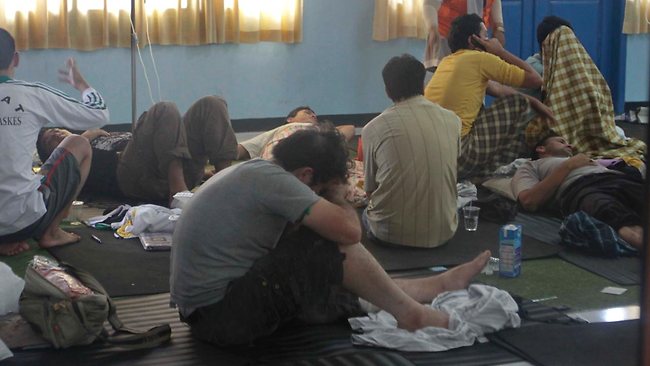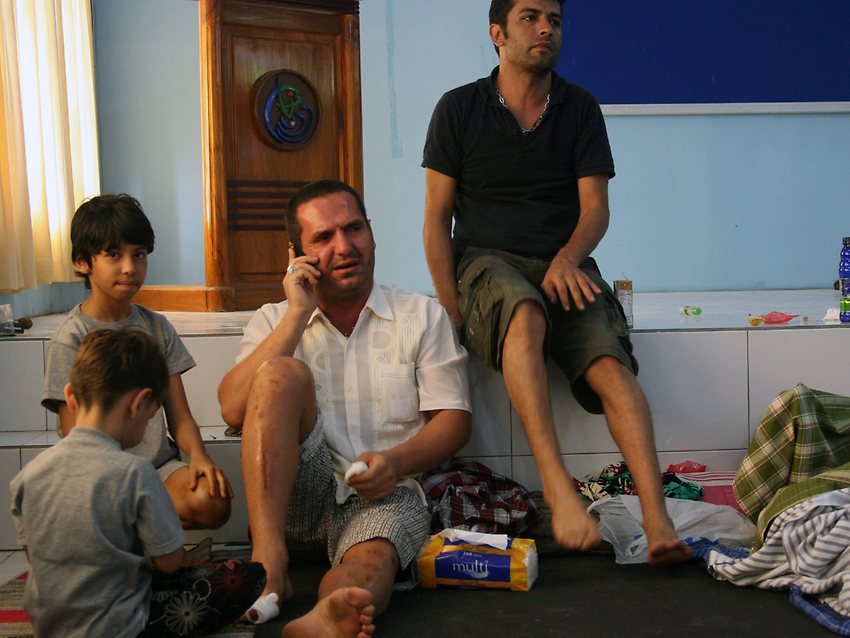Skipper fled as boatpeople drowned, say survivors
SURVIVORS of the Indonesian asylum boat disaster have told how the captain escaped the sinking vessel, leaving just 19 life jackets for over 200 people.

THE captain and his five crew had life jackets but only 19 vests remained for more than 200 Australia-bound asylum-seekers struggling for their lives in two-metre waves.
The lack of promised safety equipment and extreme overloading were critical factors in the toll - up to 180 people are dead or missing - from the terrible capsize accident off the East Java coast on Saturday morning, authorities say.
Survivors said the 20-metre fishing boat had been travelling for about six hours in heavy seas when the unbalanced weight of people sleeping on the right side caused it to list heavily and capsize within a few minutes.
“When the boat started sinking the captain ran away with his crew,” said survivor Syed Muhammad Zia.
“All of them had life jackets but it was about 25 life jackets for the total boat.”
The captain and crew, who this morning had not yet been identified by Indonesian police, were unable to cut free a dinghy before the boat foundered, but swam clear of the chaos in the water, according to other survivors.
It was still unclear today how many Iranian, Afghan and Pakistani asylum-seekers had been crammed onto the 20-metre fishing boat, which police said had safe capacity for about 100 people.
Syed said the captain told him there were 215 passengers, Indonesian police reported about 250 people and some reports yesterday suggested as many as 380.
Confusion also surrounds the number of survivors.
It now seems likely that no more than the 34 people picked up by a fishing boat about 20 nautical miles off the coast about six hours after the capsize have survived.
However the Australian government said today it had been told that 86 asylum-seekers had been pulled alive from the water.
There is a single woman survivor among the 15 women thought to be on the boat, 26-year-old Iranian Mastureh Minaee.
Three children are left from some 20 who embarked.
Ten-year-old Atena Ardani was travelling with her father, mother and sister but now only she remains. Amir Ali, about four, lost his mother, sister and infant brother.
Many of those who survived were picked up by fishing boats.
Jamble, a 25-year-old local fisherman, spotted several dark dots from his own tiny wooden fishing vessel and decided to investigate.
He and his three-member crew were horrified at what they found: hysterical and exhausted people clinging to anything that floated.
Survivors immediately started racing toward them.
“They were all fighting, scrambling to get into my boat,” Jambe said, adding there was only room for 10.
In the end he managed to get 25 on board, many of them injured and all begging for water to drink.
Those left behind were screaming and crying.
“I'm so sad ... I feel so guilty, but there were just too many of them,” said Jambe, who like many Indonesians uses only one name. “I was worried if we took any more we'd sink, too.”
Coming days after the first anniversary of the Christmas Island tragedy, which cost as many as 50 lives, it is the worst accident involving Australia-bound asylum seekers since the SIEV-X incident a decade ago.
Survivors spoke of awful scenes in the darkness; the struggle for the few life vests and more than 100 people trapped on the lower deck drowning almost immediately.
“Most of the people came out through the windows and died in front of our eyes,” said Syed, a Pakistani Hazara who described his age as about 18.
“I saw their dead bodies floating on the sea. We witnessed all of this madness, death in the water for six hours.”
Indonesian authorities moved the survivors last night from Prigi, a fishing port where they were landed on Saturday afternoon, inland to Blitar.
Police and immigration authorities begin intensive questioning this morning in their attempts to find the people-smugglers responsible for the tragedy.




